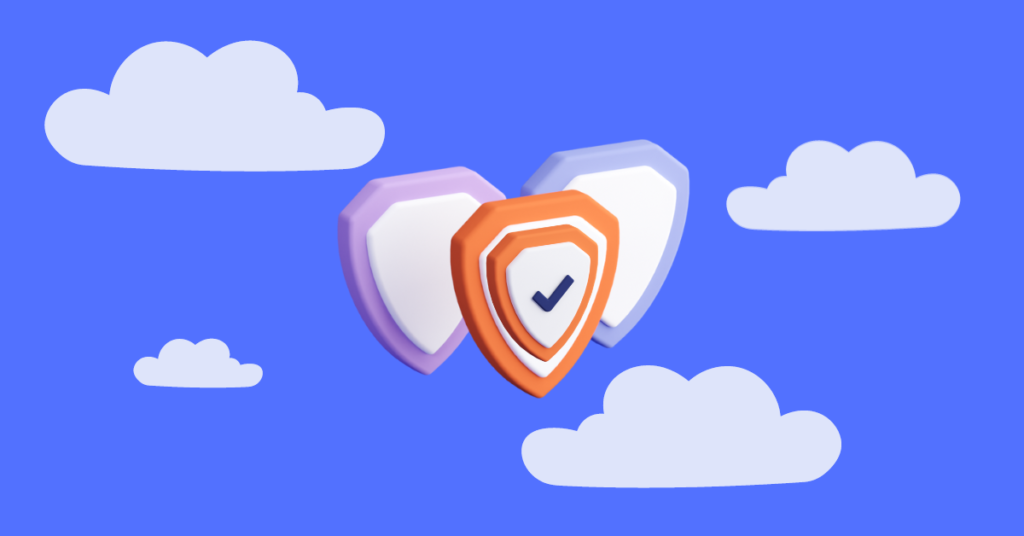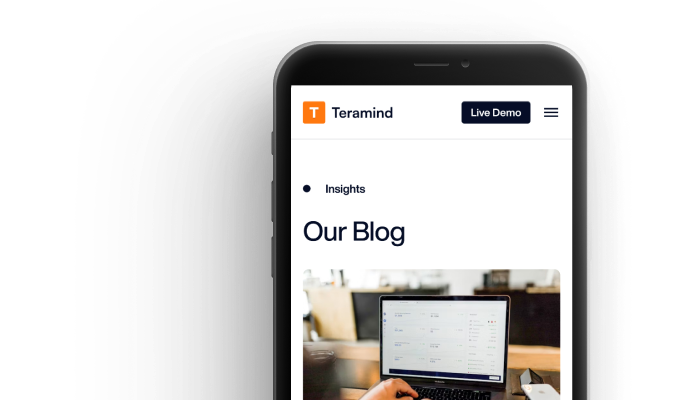With so many of their sensitive workflows moving through vendor cloud systems, companies are getting serious about cloud data loss prevention. This is a booming market that’s getting a lot of attention within the general realm of cybersecurity; experts estimate that cloud DLP will be a $27.5 billion annual market by 2031.
What is Cloud Data Loss Protection?
Cloud data loss protection is, in general, the process of protecting sensitive information in a network from the threat of data loss. Some descriptions go further and suggest that these processes and services should also discover and classify sensitive data assets. There’s often a diagnostic component to cloud DLP, as well as practical solutions for guarding the data itself. Techniques like exact data matching, and specialized analytics, may play a role in safeguarding the data that businesses use to function, whether it’s day-to-day transaction data or something more overarching like business intelligence insights.
Other definitions of cloud data loss prevention focus on the various threats to sensitive data, and how they can be addressed.
Detailing the Nature of Cloud DLP
One way to classify the wider spectrum of cloud data loss scenarios is to compare insider threats, malicious attacks by outsiders, and the accidental exposure or deletion of data.
In considering all of the work that’s done in cloud DLP, it’s important to think about not just cyberattacks, but situations where data is accidentally deleted. For example, overwriting can be a problem with cloud server activity, where data is erased or lost. This isn’t a result of harmful actions necessarily, but the effect of something else like an insufficiently organized automation.
Security professionals also distinguish between temporary and permanent kinds of data loss. When data is temporarily missing, it’s often described as ‘unavailable.’ There are generally system fixes or resolution processes that make the data available again.
By contrast, data loss involves the permanent unavailability of some critical data assets.
When brainstorming data loss prevention in the cloud, teams must ask what kinds of attacks are likely, how data may be threatened, and how solutions can mitigate these kinds of scenarios.
Cloud DLP Safety Tips: Cybersecurity Best Practices
These best practices can ensure that companies have a basic working plan for cloud data loss protection, and will lower the chances of some type of data loss event occurring.
Backups
When it comes to data security, backups are a very high priority.
It’s a simple concept – backups ensure that if a data set is lost or becomes unavailable, the backup can seamlessly step in and provide the same function. Backups can be the difference between temporary glitches and permanent problems that lead to interruptions in business processes, or worse, lost revenue.
As for the types of backups available, companies have a lot to choose from. Backup vendors often provide resources that show the security of their own data systems, as well as the flow of information to its desired destination.
Endpoint Security
Another way to improve cloud DLP is by monitoring endpoints where data can be lost or stolen. In general, comprehensive descriptions of cloud DLP talk about protecting data in transit, data at rest, and data at its point of origin or at the endpoint where the user interacts with the system. Pros also talk about continuously updating the company’s cybersecurity posture, which can include iterative efforts in cloud DLP, not just a “set it and forget it” mindset.
Perimeter Network Security
Today, much of the cybersecurity work that goes on happens beyond the perimeter of a network. There is the general consensus that firewalls and network segmentation can only do so much. Despite these advances, perimeter network security is still very relevant, especially when it comes to cloud data loss. Being able to secure data through a cloud gateway and into an internal corporate network is a key part of this type of risk mitigation. Essentially, perimeter network security functions as a “gatekeeper” for a network, filtering out potentially harmful traffic – but that only goes so far without other different things like authorization assessments and social engineering protections.
Have A Team, Have A Plan
Within the world of cloud DLP, some of the loudest and most experienced voices are promoting organization and prioritization of these objectives. One recommendation is to have a point person or task force team that will be in charge of cloud DLP across the entire network.
Planning is also a key part of cloud DLP. Having the right workflows and charts to work from helps provide transparency for the system, and aids in that process of classifying and identifying the sensitive data that you want to protect.
NIST Standards
When it comes to any kind of cybersecurity including cloud DLP, a federal agency has already done some of the work for private enterprise.
The NIST cybersecurity framework (CSF) is a key resource for addressing any sort of data loss scenario. Working from established standards and available guidelines, companies can develop their own internal plans that showcase a culture where data safety comes first.
Best New Technology
In all sorts of cybersecurity, including cloud DLP, there’s always the evaluation of how threats occur and how data loss happens.
Some of the best new technology will help companies to stay ahead of the ball. Having video-recorded user sessions allows teams to conduct detailed investigations into problematic activity and to find out exactly what happened. Being able to mine these video sessions with OCR and optical tools means that teams can search for keywords and find that needle in a haystack.

Cloud DLP Risks and Issues
For a little background on what cloud DLP teams are trying to prevent, let’s briefly go over some of the issues that come up around cloud data loss.
BYOD and IOT
As the networks that companies use get more and more complex, data loss prevention gets harder. Bring Your Own Device was one example of opening up the floodgates to people’s personal mobile devices. The Internet of Things adds billions of small connected devices that can leave loopholes for hackers.
Updates and Version Control
To prevent data loss, companies have to make sure that all of the components of their systems are up-to-date and patched for any viruses or problems that manufacturers have discovered. Otherwise, they’re behind the game in cloud cybersecurity.
Insecure APIs
Application programming interfaces are the connective tissue of many business systems. But they also allow for malicious activity if insecure API data is used to get deeper into a system.
Spearphishing
This is the social engineering component of cloud data loss. Hackers might try to get credentials from legitimate users in order to go in and steal intellectual property.
Network Hijacking
Hijacking a network means getting infrastructure to do things that benefit the hackers. One example is the phenomenon of “coinjacking” where unscrupulous black hats are able to use the latent energy in a network to mine cryptocurrencies on the sly.
Cloud Misconfiguration
If cloud services, servers and gateways are not set up correctly, it can leave a big welcome sign for hackers!
Lack of Internal Visibility
A jumbled and disorganized system makes it hard to see where the weak points are, and how to guard systems against cloud data loss.
Unevaluated Risk Context
Some security teams only look at the nuts and bolts of a given network system, and don’t think about the context that they’re working in. Being able to anticipate where threats will come from is part of best practice for cloud DLP.
Insufficient IAM
Vetting user activity is a great type of assistance for better cloud DLP. On the other hand, neglecting deeper and more profound Identity and Access Management (IAM) processes can lead to all kinds of peril. IAM means establishing a user account for each authorized user, and grouping those into role and access levels that make sense. Then there are all of the tracking and assessment tools that go along with managing those tiers of user accounts. One of the best ways to support cloud DLP is doing this sort of authorization and access work.
Mushrooming Malware
Trojans, worms and other creepy crawlies can wreak havoc on a system if left to their own devices. We’ll also talk about some tools to mitigate this issue.
7 Data Loss Prevention Tools
So what’s involved in implementing cloud DLP?
Here are some of the best ways to use available tools to beat hackers, avoid accidental emergencies, and protect data. Adopting any of these tools can strengthen your cloud DLP strategy.
1. Backups
A good data backup allows businesses to run seamlessly even if certain data sets are temporarily or even permanently unavailable.
The key is to have these redundant systems set up in safe ways, and connected thoroughly to cloud implementations in real time
2. File Web Tracking
Systems that track individual files are great resources for monitoring file activity. These tools can track files through the entire life cycle, from creation to operations and deletion. They can follow files as they are uploaded to places like Dropbox or Google Drive, and track the file’s movement internally through a network. Access control is also an element of these kinds of technology.
3. Website and App Tracking
Another related component of cloud based DLP involves tracking user activity across websites and applications.
Think of these as key environments to be monitored and evaluated for suspicious activity or loopholes. Again, more granular access control is part of the equation. The ability to record user activity is another big plus.
4. Cloud Configuration Software
Addressing the issue of cloud misconfigurations, cloud configuration software works proactively to help security teams set these systems closer to their desired states.
For example, Microsoft Endpoint Manager is intended to help with cloud configurations, and other companies offer things like access management tools for the same reasons. The philosophy is that managing endpoints does a lot to keep cloud data from being siphoned out of a network.
5. SSL Inspection Tools
These types of cloud DLP solutions can look at where websites fall afoul of SSL certification, or how the system is exploited by hackers. TCP/IP evaluation is often part of a comprehensive monitoring system.
6. Network Microsegmentation
The idea of segmenting a network also offers additional security safeguards. Things like browser isolation and network partitioning mean that hackers can’t just drag data out through an un-gated network topology. Setting up more of these ‘digital vestibules’ puts more hurdles in front of hackers and hardens the system significantly.
7. Encryption
Point-to-point encryption is another enormous resource for cloud DLP managers. As a popular cloud DLP solution, encryption shields the data in transit, so that any intercepted data would be useless to hackers or malicious outsiders.
In general, DLP tools will, in a sense, follow users around, analyzing behavior and looking for suspicious network activity. This is generally established as providing the fundamental basis for better cloud DLP as well as internal network data loss.
Conclusion
Cloud DLP supports the work that security teams do as they harden systems and protect data every day. Use the above tips for a more modern and upgraded defense for data in today’s fast-paced, digitally connected world.








